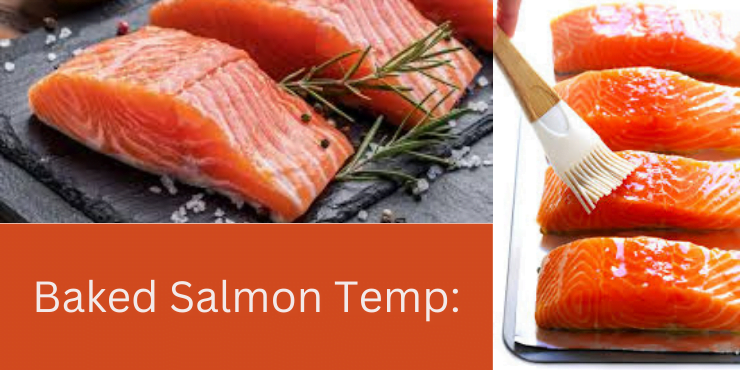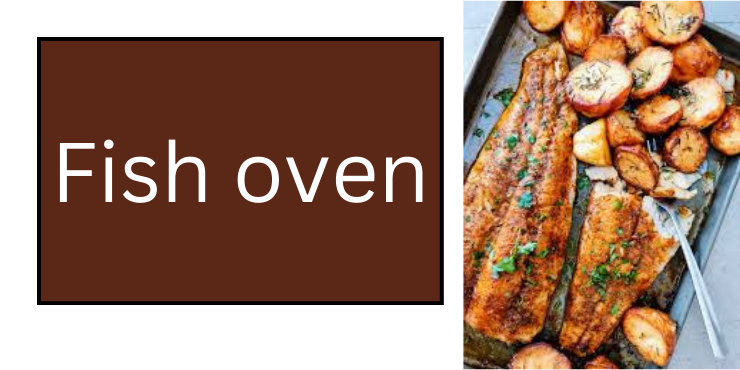Table of Contents
Fish oven is a versatile and nutritious protein source that can be prepared in numerous ways. Among the various methods of cooking fish, using an oven offers distinct advantages in terms of flavor, health benefits, and convenience.
The Evolution of Fish Ovens
Traditional Methods
In the past, fish was often cooked using traditional methods such as grilling over an open flame or smoking it in a wood-fired oven. These methods imparted a unique smoky flavor to the fish but required constant monitoring and manual effort.
Modern Innovations
With advancements in technology, fish ovens have undergone significant transformations. Modern fish ovens come equipped with precise temperature control, convection features, and specialized cooking modes tailored for fish preparation. These innovations have simplified the cooking process and elevated the quality of the final dish.
Benefits of Using a Fish Oven
Enhanced Flavor
Cooking fish in an oven allows for even heat distribution, ensuring that the fish cooks evenly and retains its natural moisture. This results in tender, flavorful fish with a perfectly crisp exterior.
Healthy Cooking
Unlike frying or deep-frying, which may require excessive oil, oven cooking requires minimal added fats. This makes it a healthier option for those conscious of their dietary intake. Additionally, the gentle heat of the oven helps preserve the delicate nutrients present in fish.
Convenience
Fish ovens offer unmatched convenience, allowing cooks to set the desired temperature and cooking time and walk away until the fish is ready. This hands-off approach frees up time to focus on other tasks while ensuring consistently delicious results.
Types of Fish Ovens
Conventional Ovens
Standard kitchen ovens are versatile appliances that can be used to bake, roast, and broil fish to perfection. With adjustable racks and temperature settings, they offer flexibility for various cooking techniques.
Smokers
Smokers are specialized ovens designed specifically for infusing fish with a rich, smoky flavor. By using wood chips or pellets, smokers impart a distinctive taste that is highly sought after by seafood enthusiasts.
Outdoor Grills
Grilling fish outdoors adds a charred, smoky essence that complements its natural flavors. Whether using a gas or charcoal grill, the open flame imparts a unique taste and texture to the fish.
Tips for Cooking Fish in an Oven
Preparation
Before cooking, ensure that the fish is properly cleaned and patted dry to remove excess moisture. This helps prevent the fish from becoming soggy during cooking.
Seasoning
Experiment with different herbs, spices, and marinades to enhance the flavor of the fish. Citrus-based marinades and herb rubs pair particularly well with a variety of fish species.
Cooking Techniques
For delicate fish fillets, consider wrapping them in foil or parchment paper to prevent them from drying out. Alternatively, grilling fish on a cedar plank adds a subtle smokiness while protecting it from direct heat.
Popular Fish Recipes for Oven Cooking
Baked Salmon

Season salmon fillets with olive oil, lemon juice, garlic, and dill, then bake in the oven until flaky and tender. Serve with a side of roasted vegetables for a wholesome meal.
Grilled Sea Bass
Marinate sea bass fillets in a mixture of soy sauce, ginger, and honey, then grill in the oven until golden brown and caramelized. Garnish with fresh herbs and sesame seeds for added flavor.
Roasted Trout
Stuff whole trout with lemon slices, garlic, and herbs, then roast in the oven until the skin is crispy and the flesh is fork-tender. Serve with a squeeze of lemon juice for a refreshing finish.
Common Mistakes to Avoid
Overcooking
Fish can quickly become dry and rubbery if overcooked. To avoid this, monitor the cooking time closely and remove the fish from the oven as soon as it flakes easily with a fork.
Underseasoning
Proper seasoning is crucial for bringing out the natural flavors of fish. Be generous with herbs, spices, and aromatics to ensure a well-seasoned dish.
Choosing the Wrong Fish
Not all fish are well-suited for oven cooking. Choose firm-fleshed varieties such as salmon, cod, or halibut that can withstand high heat without falling apart.
Maintenance and Cleaning Tips
Regular Cleaning Routine
After each use, wipe down the interior of the oven with a damp cloth to remove any food residue or grease buildup. Periodically, use a mild cleaning solution to tackle stubborn stains.
Dealing with Grease Buildup
Grease buildup can affect the performance of the oven and lead to unpleasant odors. Use a degreaser or baking soda paste to effectively remove grease and restore the oven’s cleanliness.
Maintaining Optimal Performance
Check the seals and gaskets of the oven regularly to ensure they are intact and functioning properly. Replace any worn-out components to prevent heat loss and maintain energy efficiency.
Environmental Impact of Fish Ovens
Energy Efficiency
Opt for energy-efficient fish ovens that consume minimal electricity or gas. Consider investing in models with eco-friendly features such as insulation and programmable timers to reduce energy consumption.
Sustainable Practices
Choose sustainably sourced fish from reputable suppliers to minimize environmental impact. By supporting responsible fishing practices, consumers can help preserve marine ecosystems for future generations.
Conclusion
Fish ovens offer a convenient and healthy way to prepare delicious seafood dishes at home. Whether baking, grilling, or smoking, these versatile appliances allow cooks to unleash their creativity and explore a world of flavors.
Unique FAQs
- Can I use frozen fish in the oven?
- Yes, frozen fish can be cooked in the oven, but be sure to thaw it thoroughly before cooking to ensure even cooking.
- How do I know when fish is done cooking in the oven?
- Fish is done cooking when it flakes easily with a fork and reaches an internal temperature of 145°F (63°C).
- Can I use aluminum foil in the oven when cooking fish?
- Yes, aluminum foil can be used to wrap fish fillets or create a pouch for oven cooking. It helps retain moisture and prevents the fish from sticking to the pan.
- Are there any health benefits to eating oven-cooked fish?
- Yes, oven-cooked fish is a nutritious source of protein, omega-3 fatty acids, and essential vitamins and minerals. It can support heart health, brain function, and overall well-being.
- What is the best way to reheat leftover fish in the oven?
- To reheat leftover fish, place it in a preheated oven at 350°F (175°C) for 10-15 minutes, or until warmed through. Cover loosely with foil to prevent drying out.

